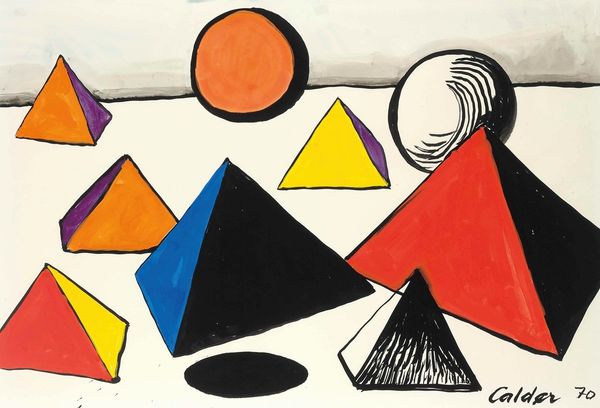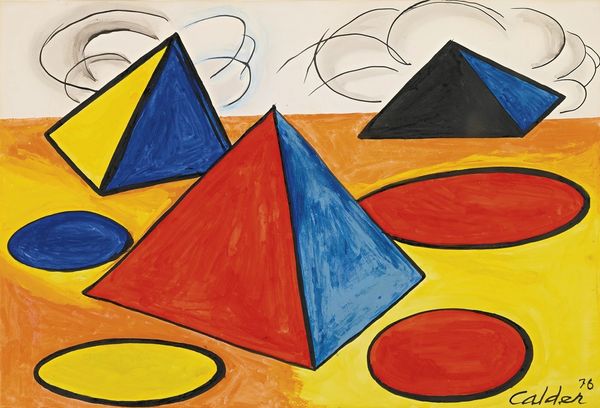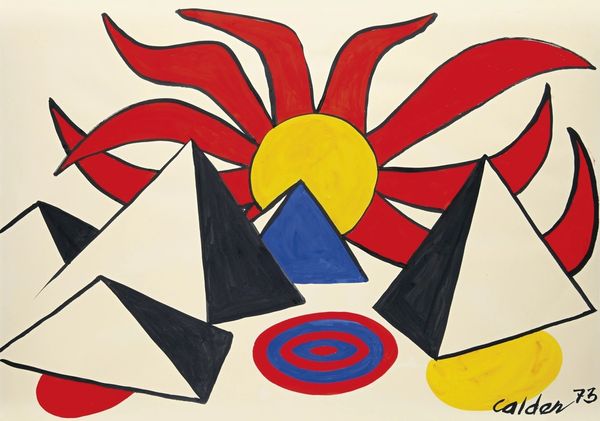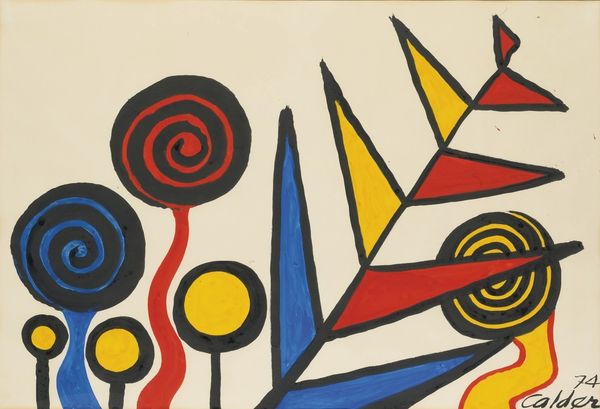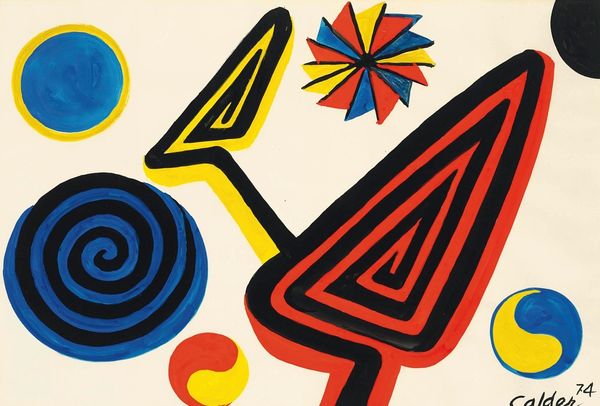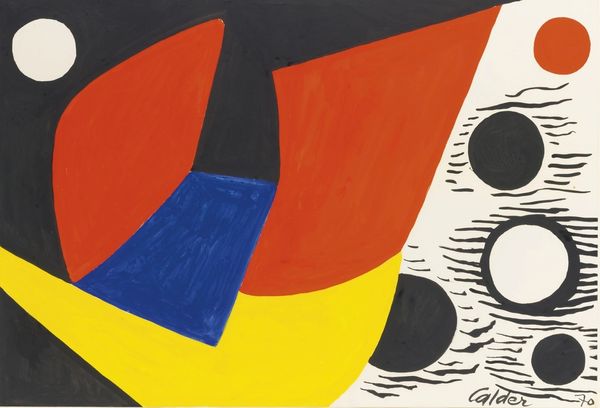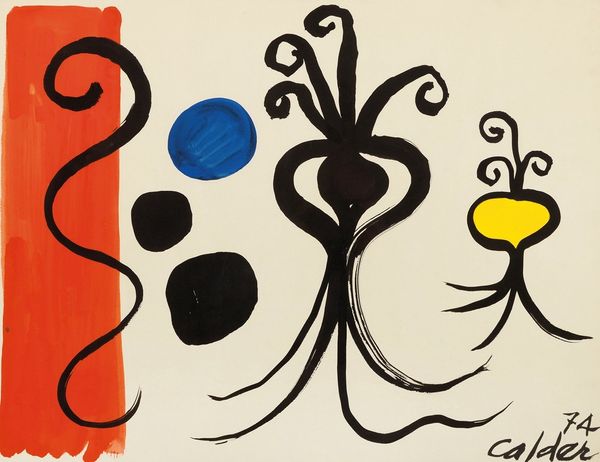
Copyright: Modern Artists: Artvee
Editor: We’re looking at Alexander Calder’s “Hello Green!” from 1971, an acrylic on canvas. The bold shapes and primary colors give it a playful, almost childlike feel. What strikes you about this piece? Curator: Immediately, I see a negotiation between high art and mass production. Acrylic paint, a relatively new, readily available material in 1971, contrasts sharply with the traditionally revered oil paints. Calder uses this industrial material to create what could be seen as a joyful composition, but the means of production and the context of its creation challenge conventional notions of artistic labor. The simple geometric forms also nod towards an interest in manufactured elements versus organic ones. Editor: So, the choice of acrylic is as important as the colors themselves? Curator: Precisely. It invites us to consider the post-war context of art, where consumer culture and mass production influenced not only the subject matter, as we see in Pop Art, but also the very materials artists used. Think about it – what does this embrace of readily available material say about the art world moving beyond traditional limitations? Editor: It’s interesting how this shifts my perspective. It's not *just* simple shapes, it becomes a statement. I’m also considering it in relation to earlier paintings of his from the '30s - the gap of time feels quite different now! Curator: Indeed. This simpler approach signals the changing artistic values around process, materiality, and democratized forms that followed that time. Editor: I guess I never really considered Calder's work through this lens before, always focusing more on the form itself. It really makes you think about what ‘art’ can be and who gets to decide. Curator: Exactly, and the dialogue keeps going with each encounter!
Comments
No comments
Be the first to comment and join the conversation on the ultimate creative platform.
